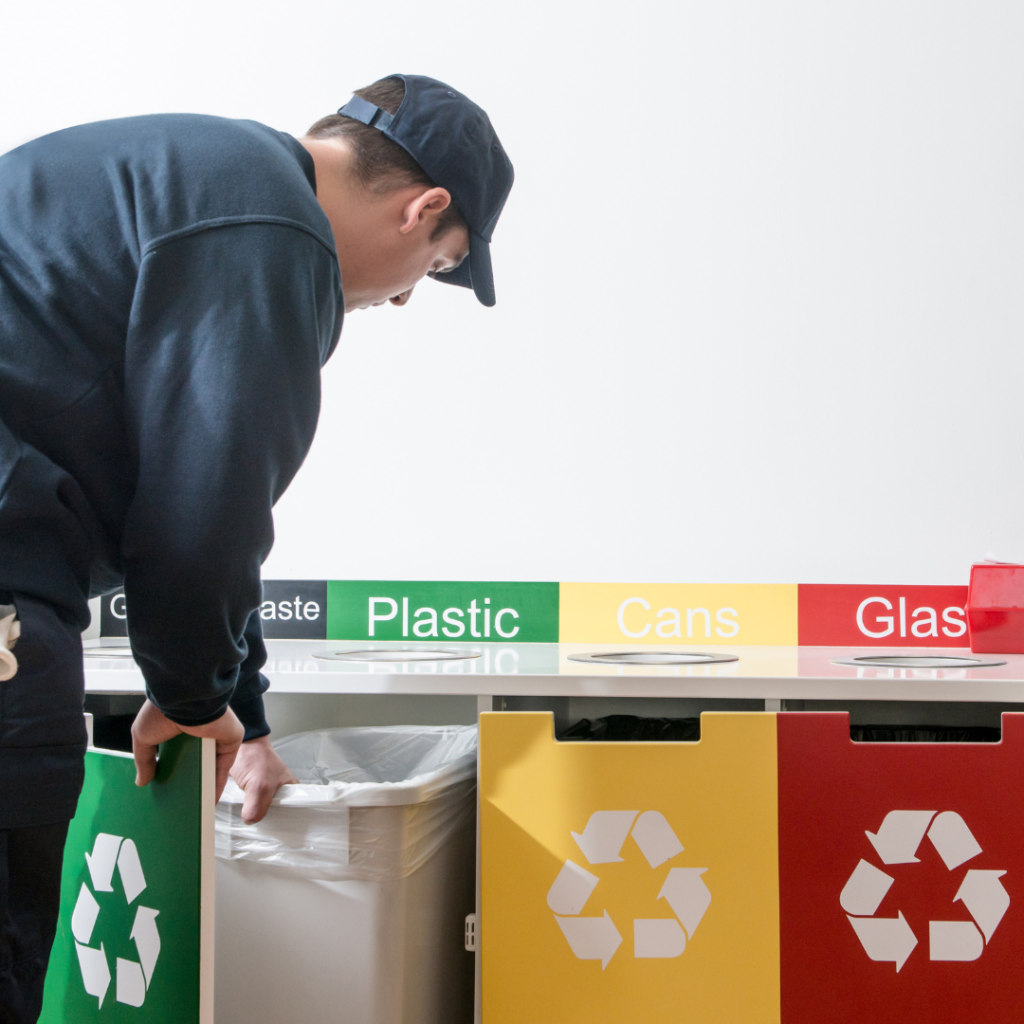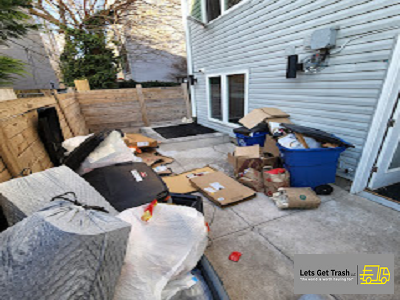Trash Disposal Solutions: Finding What Works Best
In a world grappling with the environmental consequences of waste generation, finding effective trash disposal solutions has become imperative. From overflowing landfills to marine pollution, the challenges posed by waste disposal are manifold and require innovative approaches for mitigation. Fortunately, there is a range of disposal solutions available, each with its own advantages and considerations. By exploring these options and finding what works best for our communities, we can pave the way towards a cleaner, more sustainable future.
The Global Waste Challenge
The scale of the global waste challenge is staggering. According to the World Bank, global waste generation is expected to increase by 70% by 2050, outpacing population growth. This surge in waste poses significant environmental, social, and economic risks, from land and water pollution to greenhouse gas emissions. Addressing this challenge requires a multifaceted approach that encompasses waste reduction, recycling, and responsible disposal.

Landfills: The Traditional Approach
Landfills have long been the primary method of waste disposal in many regions. While landfills provide a convenient and cost-effective means of waste management, they come with significant drawbacks. Landfill sites emit methane—a potent greenhouse gas—into the atmosphere as organic waste decomposes, contributing to climate change. Moreover, landfills pose risks to groundwater and soil quality, as leachate from decomposing waste can contaminate surrounding ecosystems.
Waste-to-Energy: Harnessing Renewable Resources
Waste-to-energy (WTE) facilities offer an alternative to traditional landfill disposal by converting municipal solid waste into energy. Through processes such as incineration or gasification, WTE facilities generate electricity or heat from waste materials, reducing the volume of waste sent to landfills and offsetting the use of fossil fuels. While WTE can help alleviate landfill burden and produce renewable energy, concerns remain regarding air emissions and the potential release of pollutants.
Waste-to-Energy (WTE) stands as a beacon of innovation in the realm of waste management, offering a multifaceted solution to the challenges posed by burgeoning waste streams and increasing energy demands. At its core, WTE represents a sustainable approach that harnesses the latent energy embedded within municipal solid waste (MSW) while simultaneously reducing the volume of waste destined for landfills. This process not only mitigates environmental degradation associated with traditional waste disposal methods but also contributes to renewable energy generation and resource conservation.
The Mechanics of Waste-to-Energy
Waste-to-Energy facilities utilize various thermal and biological processes to convert MSW into electricity, heat, or both. The most common method involves combustion, where waste is burned at high temperatures in specially designed incinerators. The heat generated from combustion is then used to produce steam, which drives turbines to generate electricity. Alternatively, gasification processes break down organic materials in the absence of oxygen, producing synthetic gas (syngas) that can be used to generate electricity or produce biofuels.
Advantages of Waste-to-Energy
One of the primary advantages of WTE is its ability to divert significant quantities of waste from landfills, thereby extending their lifespan and reducing methane emissions. Methane, a potent greenhouse gas emitted during the anaerobic decomposition of organic waste in landfills, contributes to climate change. By diverting organic waste from landfills and incinerating it in controlled environments, WTE facilities prevent the release of methane while recovering energy from waste materials.
Furthermore, WTE represents a renewable energy source that complements intermittent renewables like solar and wind. Unlike solar and wind power, which depend on weather conditions, WTE facilities can operate continuously, providing a reliable source of baseload power to the grid. This reliability makes WTE an attractive option for meeting energy demands and enhancing grid stability, particularly in regions with fluctuating renewable energy output.
Environmental Considerations and Regulation
While WTE offers several environmental benefits, it is not without its challenges and controversies. Critics argue that WTE facilities emit air pollutants and greenhouse gases, albeit at lower levels than uncontrolled combustion in open dumps or landfills. However, modern WTE plants employ advanced pollution control technologies, such as scrubbers and filters, to minimize emissions and ensure compliance with stringent environmental regulations.
Regulatory frameworks governing WTE vary by jurisdiction, with many countries imposing strict emissions standards and monitoring requirements to safeguard public health and the environment. Additionally, ongoing research and development efforts focus on enhancing the efficiency and environmental performance of WTE technologies, further reducing emissions and improving resource recovery.
Waste-to-Energy represents a critical component of sustainable waste management strategies, offering a balanced approach to waste diversion, energy generation, and environmental protection. By harnessing renewable resources embedded within MSW, WTE facilities play a vital role in reducing landfill burden, mitigating greenhouse gas emissions, and contributing to renewable energy portfolios.
As technology continues to evolve and regulatory frameworks evolve, Waste-to-Energy is poised to play an increasingly significant role in the transition to a circular economy and a low-carbon future. Through continued investment in research, innovation, and responsible waste management practices, we can harness the potential of Waste-to-Energy to create a cleaner, more sustainable world for current and future generations.
Recycling: Maximizing Resource Efficiency
Recycling plays a crucial role in waste management by diverting materials from landfills and conserving natural resources. By collecting and processing recyclable materials such as paper, plastics, glass, and metals, recycling facilities transform waste into valuable resources for manufacturing. Recycling not only reduces the demand for virgin materials but also saves energy and reduces greenhouse gas emissions associated with resource extraction and production.

Recycling stands as a cornerstone of sustainable waste management practices, offering a multitude of benefits that extend far beyond waste diversion. At its essence, recycling embodies the principle of resource efficiency, maximizing the value of materials while minimizing the environmental impact of resource extraction and production. Through the systematic collection, processing, and reuse of recyclable materials, recycling contributes to resource conservation, energy savings, and greenhouse gas emissions reduction, thereby promoting a more sustainable and circular economy.
Resource Conservation and Waste Reduction
One of the primary benefits of recycling is its ability to conserve natural resources and reduce the need for virgin materials. By recovering and reprocessing materials such as paper, plastics, glass, and metals, recycling diverts significant quantities of waste from landfills while conserving valuable resources. For example, recycling aluminum cans saves up to 95% of the energy required to produce aluminum from bauxite ore, a finite and energy-intensive resource. Similarly, recycling paper helps preserve forests and reduces the environmental footprint associated with pulp production and deforestation. Through resource conservation and waste reduction, recycling minimizes the strain on ecosystems and promotes long-term environmental sustainability.
Energy Savings and Carbon Emissions Reduction
In addition to resource conservation, recycling offers substantial energy savings and greenhouse gas emissions reduction benefits. Compared to the extraction and processing of raw materials, recycling often requires significantly less energy input, thereby reducing the environmental impact of resource extraction and production. For instance, recycling one ton of plastic bottles saves approximately 3.8 barrels of oil, conserving finite fossil fuel resources and reducing carbon emissions associated with petroleum extraction and refining. Moreover, by substituting recycled materials for virgin resources in manufacturing processes, recycling helps mitigate greenhouse gas emissions and combat climate change. Through energy savings and carbon emissions reduction, recycling contributes to global efforts to transition towards a low-carbon economy and mitigate the impacts of climate change.
Economic Opportunities and Job Creation
Recycling not only delivers environmental benefits but also generates economic opportunities and fosters job creation. The recycling industry encompasses a diverse range of activities, including collection, sorting, processing, and manufacturing, all of which contribute to economic growth and employment. According to the U.S. Environmental Protection Agency, recycling and reuse activities in the United States supported over 681,000 jobs and generated $37.8 billion in wages in 2016. Moreover, by reducing production costs for manufacturers and creating demand for recycled materials, recycling stimulates market development and promotes sustainable consumption and production patterns. Through economic opportunities and job creation, recycling strengthens local economies, enhances resilience, and fosters community prosperity.
Closing the Loop: Towards a Circular Economy
Ultimately, recycling plays a pivotal role in advancing the transition towards a circular economy, where resources are kept in circulation for as long as possible through reuse, recycling, and remanufacturing. By closing the loop on product lifecycles and promoting the circular flow of materials, recycling minimizes waste, conserves resources, and maximizes resource efficiency. Through collaboration among governments, businesses, communities, and individuals, we can build a more sustainable and circular economy that prioritizes resource conservation, environmental protection, and societal well-being.
Recycling represents a powerful tool for maximizing resource efficiency, minimizing waste, and advancing sustainable development goals. By conserving natural resources, reducing energy consumption, and creating economic opportunities, recycling delivers a wide range of environmental, economic, and social benefits. As we strive to build a more sustainable future, recycling serves as a cornerstone of responsible waste management practices and a catalyst for positive change. Contact us today to learn more about how you can participate in recycling initiatives and contribute to a more sustainable and circular economy.
Composting: Closing the Organic Loop
Composting offers a sustainable solution for managing organic waste, such as food scraps and yard trimmings. Through composting, organic materials decompose into nutrient-rich compost, which can be used to enrich soil and support plant growth. Composting not only diverts organic waste from landfills but also reduces methane emissions associated with anaerobic decomposition. Community composting programs and home composting bins empower individuals to participate in waste reduction efforts and contribute to soil health.
Innovative Solutions: Advancing Waste Management Technology
In addition to traditional disposal methods, innovative technologies are emerging to tackle the waste challenge. From advanced sorting and recycling technologies to biodegradable materials and closed-loop systems, these solutions hold promise for revolutionizing waste management practices. By harnessing the power of innovation and collaboration, we can develop more efficient, sustainable, and cost-effective approaches to waste disposal.
Finding What Works Best: A Collaborative Effort
Ultimately, finding the best trash disposal solutions requires a collaborative effort involving governments, businesses, communities, and individuals. By considering the unique needs and circumstances of each region, we can tailor waste management strategies to maximize effectiveness and minimize environmental impact. Comprehensive waste management plans that integrate reduction, recycling, composting, and responsible disposal offer a holistic approach to addressing the waste challenge.
Conclusion:
As we confront the escalating pressures of waste generation, it is clear that a one-size-fits-all approach to trash disposal is inadequate. Instead, we must embrace a diversity of solutions and adapt them to local contexts, preferences, and resources. By investing in recycling infrastructure, promoting composting initiatives, exploring innovative technologies, and fostering community engagement, we can forge a path towards a cleaner, more sustainable future for generations to come. Contact us today to learn how you can be part of this journey towards effective trash disposal solutions and environmental stewardship.







